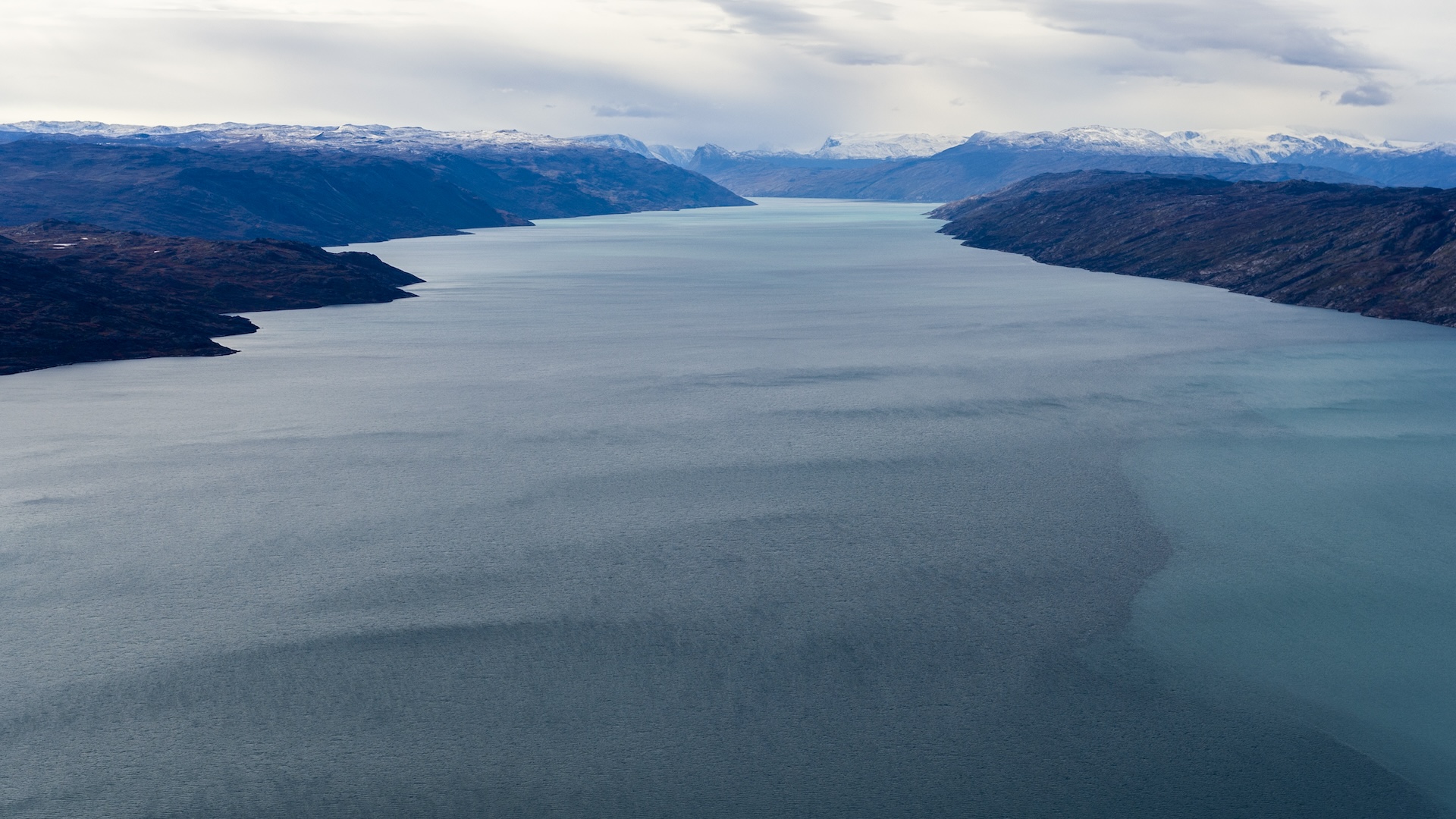'Failed' microcontinent found hiding beneath Greenland and Canada
The Davis Strait, west of Greenland, holds a long-lost chunk of an almost-continent that didn't quite form about 58 million years ago.

A failed miniature continent lies hidden beneath the sea between Canada and Greenland, scientists have discovered.
The Davis Strait, which separates the two landmasses, ranges from about 200 to 400 miles (320 to 640 kilometers) wide on its path connecting the Labrador Sea and Baffin Bay. It's known to have an oddly thick seafloor, and now researchers know why: The crust is actually a crumb of a continent that didn't fully pull away when Greenland and Canada rifted apart.
The findings, which the team will publish in the September issue of the journal Gondwana Research, is the most detailed look yet at this incomplete rifting process. The researchers also suspect they've discovered an ancient fault, similar to California's San Andreas fault, in the area. This fault may have acted like a guardrail, directing Greenland's initial movement as it started to pull away from Canada around 60 million years ago.
Related: Scientists finally discover 'lost continent' thought to have vanished without a trace
The two landmasses never fully managed to separate. About 33 million years ago, Greenland stopped pulling away from North America and remains on the North American tectonic plate. But this failed rift zone is an interesting place to study how tectonic plates move and split, said study co-author Jordan Phethean, a geophysicist at Derby University in the U.K.
"If we can understand why the plates are moving in the directions that they are, it allows us to understand what’s controlling plate tectonics," Phethean told Live Science.
The researchers called the newfound chunk of continental crust beneath the Davis Strait a proto-microcontinent. Microcontinents are pieces of crust that have broken away from main continents. Many are submerged beneath the oceans, surrounded by denser oceanic crust, but some, like Madagascar, form their own islands. The Davis Strait example didn't quite fully break away; it's a 12- to 15-mile-thick (19 to 24 km) segment of continental crust, surrounded by thinned-out continental crust that is about 9 to 10.5 miles (14 to 17 km) thick on each side. That's why it gets the "proto" moniker, Phethean said.
Sign up for the Live Science daily newsletter now
Get the world’s most fascinating discoveries delivered straight to your inbox.
The researchers reconstructed the subterranean structure of the Davis Strait region using gravity data collected by satellites and seismic data collected by ships. Gravity data provide information about rock density by measuring minute variations in the pull of gravity, while seismic data use the reflection of acoustic waves to map deep rock layers and structures. The scientists used this information to build computer models of past plate movement.
They found that North America and Greenland first started pulling apart around 120 million years ago. This sped up dramatically around 61 million years ago. The seafloor of the Davis Strait began to spread, creating more distance between what's now Canada and Greenland. At this point, Greenland may have been riding along the San Andreas-like fault called the Pre-Ungava Transform Margin, which guided its track mostly northeast. Then, around 56 million years ago, Greenland hit the end of that structure and shifted to a mostly northerly direction of travel. The Davis Strait proto-microntinent was born during this time.
The North American plate seemed poised to break apart. But then, around 48 million years ago, it all fizzled out. A new major fault formed in the region and rifting in the Davis Strait ceased. Not long after, around 33 million years ago, Greenland crashed into Ellesmere Island, which may have further slowed its movement. Today, Phethean said, the area is relatively quiet, with no large, continent-reshaping earthquakes.
While plate tectonics are often thought to be driven by deep-Earth processes, like the sinking of oceanic plates beneath the continents, the importance of the newfound fault in the Davis Strait suggests that features in the upper crust can have a major influence too, Phethean said.
"It seems like the lithosphere, which is the rocks on the outside of the planet, plays quite an important role in why the tectonic plates are moving the way that they are," he said.

Stephanie Pappas is a contributing writer for Live Science, covering topics ranging from geoscience to archaeology to the human brain and behavior. She was previously a senior writer for Live Science but is now a freelancer based in Denver, Colorado, and regularly contributes to Scientific American and The Monitor, the monthly magazine of the American Psychological Association. Stephanie received a bachelor's degree in psychology from the University of South Carolina and a graduate certificate in science communication from the University of California, Santa Cruz.









